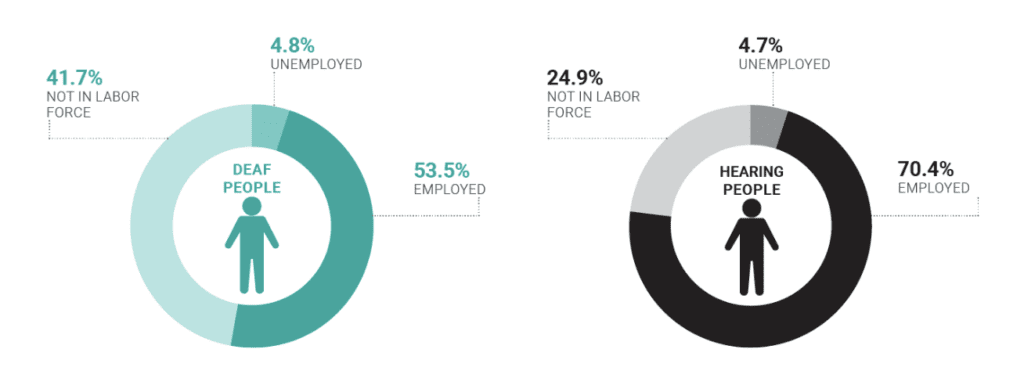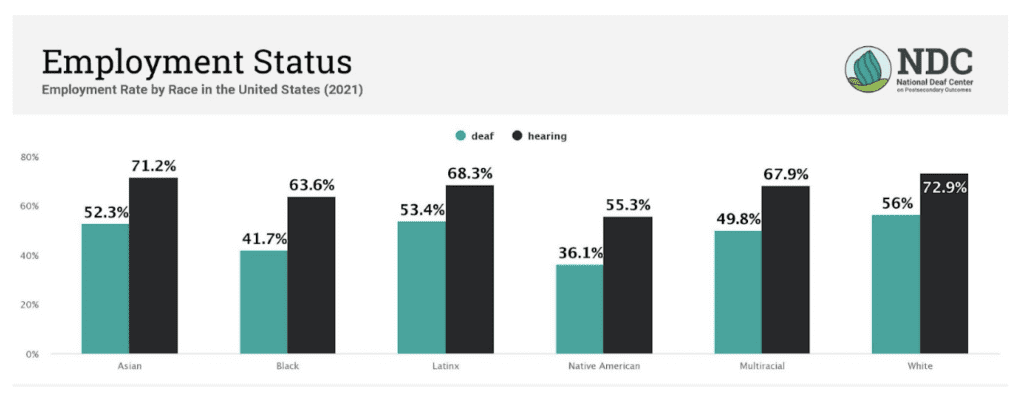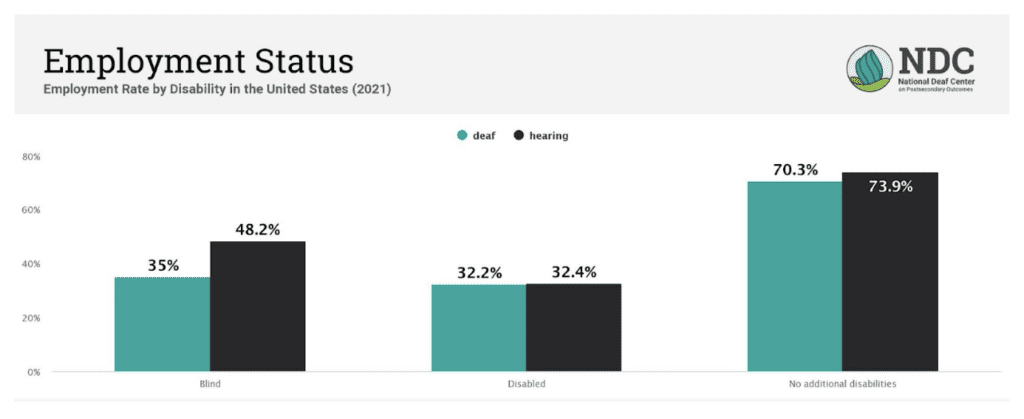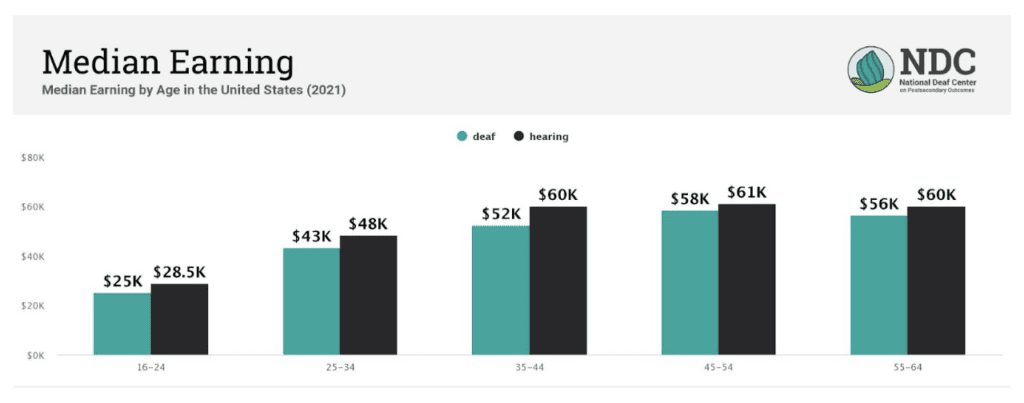Deaf people in the United States are less likely to be employed than hearing people, and employment rates vary widely by race, ethnicity, and disability. This is according to new data from the National Deaf Center on Postsecondary Outcomes (NDC).
NDC’s data dashboard shows that only 54% of deaf people are employed, compared to 70% of hearing people. The unemployment rate for deaf people is similar to the general population, but deaf people of color, deafdisabled people, and deafblind people are more likely to be unemployed.
The Most Marginalized
Employment rates are also lowest among deafdisabled and deafblind people. Only 32% of deafdisabled people and 35% of deafblind people are employed. This is compared to 70% of deaf people without additional disabilities.
“This is indicative of additional barriers present for deafblind and deafdisabled people when entering the workforce,” said Carrie Lou Bloom, Ph.D., co-director of NDC.
Employment rates also differ across race and ethnicity. White deaf people see higher employment rates than Black and Native American deaf people, whereas Latine deaf people are employed at rates comparable to overall employment rates. However, Latine deaf people earn less money on the job.
Money Matters
It is important to understand that employment rates aren’t the only measure of success. There are significant earring gaps between deaf and hearing people between 16-64 years old. Additionally, Black and Latine deaf people make less money than other races and ethnicities, and less than deaf people with additional disabilities.
The median annual income for deaf people working full-time in 2021 was $52,000. Deaf people between the ages of 16-65 make between 13-14% less annually than their hearing counterparts despite increasing job opportunities over time.
Addressing Systemic Barriers
“There are many reasons why deaf people may not be participating in the labor force,” said Bloom. “There are still many systemic barriers preventing deaf people, specifically deafdisabled and deafblind people, from attaining gainful employment with real opportunities for career advancement. Deaf people with children may not be willing to work – especially if they can’t make enough money to cover childcare expenses. College students and recent graduates may be choosing to focus on school and continuing their education.”
Additionally, a higher percentage of deaf people choose to work for themselves and own businesses. Deaf people may be choosing this path to counter persistent employment barriers and bypass the need to navigate accessibility challenges or assumptions from employers.
Despite the challenges, Bloom said that many things can be done to improve employment outcomes for deaf people.
“NDC’s mission is to share information, networks, and strategies to improve continuing education and training for deaf people,” said Bloom. “It’s our job to ensure that deaf people have equal access to continuing education & training after high school, to have the best chance to be competitive in the workplace and stay on track for career advancement over time.”
What can be done to improve employment outcomes for deaf people?
There are a number of things that can be done to improve employment outcomes for deaf people, including:
- Providing more access to quality education and training
- Removing communication barriers in the workplace
- Increasing awareness of deaf people’s capabilities and potential
- Creating more inclusive workplaces
What can deaf people do to improve their chances of finding employment?
There are a number of things that deaf people can do to improve their chances of finding employment, including:
- Networking with other deaf people in the workforce
- Seeking out employers who are committed to representation and accessibility
- Taking advantage of job training and placement programs
- Promoting their skills and experience to potential employers
What can be done to improve career readiness for deaf youth?
There are a number of things that can be done to improve career readiness for deaf youth, including:
- Fostering autonomy among deaf youth
- Starting career exploration earlier
- Facilitating school & employer partnerships
- Supporting ongoing career development
Changing the system is our responsibility.
By working together, we can create a more equal and accessible workplace for all people, including deaf people.
Citations
Bloom, C.L, Palmer, J.L., & Winninghoff, J. (2023). Deaf Postsecondary Data from the American Community Survey [Data visualization tool]. National Deaf Center on Postsecondary Outcomes, University of Texas at Austin. www.nationaldeafcenter.org/dashboard













